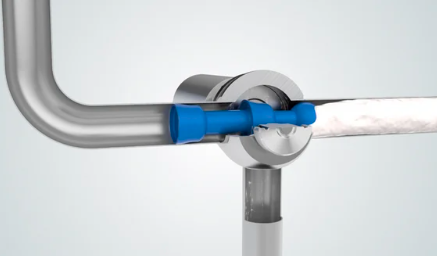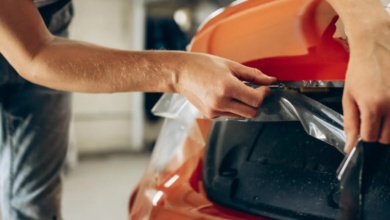Understanding Pigging System Applications in Modern Industries

The advancement of industrial systems has led to the development of various technologies aimed at improving efficiency, safety, and sustainability. One such technology, the pigging system, plays a crucial role in a range of industries. From oil and gas to food processing, pigging systems help maintain pipeline cleanliness, enhance product quality, and streamline production processes. In this article, we will explore the pigging system applications, their importance, and how they benefit industries globally.
What is a Pigging System?
A pigging system is a pipeline maintenance technology that uses a device known as a “pig” to travel through pipes. These devices are designed to clean, inspect, or separate products within pipelines. The term “pig” is an acronym for “Pipeline Inspection Gauge,” and the pigging process refers to the method of pushing these pigs through pipes to perform different tasks. Pigging systems are essential for transporting liquids, gases, or slurries in pipelines without contaminating or losing material.
Pigging is used for a variety of applications, including cleaning pipelines, separating different products during transportation, and inspecting the integrity of pipelines. In industrial settings, the efficiency of a pigging system is crucial for ensuring the smooth operation of processes, reducing downtime, and maintaining high standards of hygiene and safety.
Key Applications of Pigging Systems
1. Pipeline Cleaning
One of the primary applications of pigging systems is pipeline cleaning. Over time, debris, residue, or buildup from transported materials can accumulate in pipelines, potentially affecting the flow and efficiency of operations. This can lead to blockages, corrosion, or even the contamination of products.
Pigging systems are used to clean pipelines by sending pigs through the pipe to remove residual materials. These pigs are equipped with brushes, scrapers, or foam elements that clean the interior of the pipes as they travel through. For industries such as oil and gas or food processing, cleaning pipelines effectively is critical to maintaining smooth operations. A well-maintained pipeline ensures that production runs efficiently without costly interruptions due to blockages or contamination.
2. Product Separation in Multi-Product Pipelines
In industries where pipelines transport multiple products, such as in the food or chemical industries, maintaining product integrity is crucial. The pigging system applications in such scenarios involve separating different products that travel through the same pipeline. These systems can place pigs between batches of different products to prevent cross-contamination.
Read also: Explains MSME Full Form and Benefits for Small Businesses
For example, in the food industry, a pigging system can separate chocolate syrup from vanilla syrup or different types of juices, ensuring that no residual product from one batch contaminates the next. This reduces product waste, prevents flavor mixing, and ensures that each batch meets the quality standards expected by consumers.
3. Pipeline Inspection
Pigging systems are also widely used for pipeline inspection. The pigs used in these systems can be equipped with sensors, cameras, and other diagnostic tools to inspect the condition of a pipeline during operation. These pigs, often referred to as “intelligent pigs,” can detect anomalies such as corrosion, cracks, and other structural defects in pipelines.
Regular inspection is essential in industries like oil and gas, where pipeline integrity is vital to safety and environmental protection. Intelligent pigs can travel through long stretches of pipeline, collecting data and providing valuable insights into the condition of the infrastructure. This allows companies to schedule repairs or maintenance before serious issues arise, minimizing downtime and preventing accidents.
4. Cleaning in the Food and Beverage Industry
In the food and beverage industry, hygiene standards are strict due to the potential for contamination. Pigging system applications are increasingly used to clean pipelines that transport ingredients like syrups, oils, and juices. The cleaning process ensures that no residues from previous batches remain in the pipeline, which could otherwise affect the quality of the next product.
For instance, in a candy manufacturing plant, pigging systems are used to remove leftover chocolate, caramel, or syrup from pipelines before switching to a new batch. By cleaning the pipes efficiently, these systems reduce the risk of contamination and maintain high levels of product quality. Furthermore, they help food manufacturers comply with hygiene regulations, ensuring the safety of their products.
5. Waste Reduction and Recovery
A significant benefit of pigging systems is the reduction of material waste. In industries where expensive materials like chemicals, oils, or food ingredients are transported through pipelines, ensuring that as much of the material as possible is recovered and reused is crucial for reducing costs.
Pigging systems can recover residual materials that would otherwise be discarded, providing a more sustainable and cost-effective solution. For example, in the pharmaceutical or food industries, product losses can be minimized by using pigging systems to push the remaining material from the pipeline back into the process. This not only reduces waste but also ensures that valuable raw materials are used efficiently, leading to lower operational costs.
6. Environmental Protection
In industries like oil and gas, the environmental impact of spills and leaks can be severe. Pigging systems help prevent such issues by maintaining the cleanliness and integrity of pipelines. A well-maintained pipeline is less likely to leak or rupture, reducing the risk of harmful environmental consequences.
Moreover, pigging systems can aid in the recovery of spilled materials. For example, if a spill occurs during the transportation of chemicals or petroleum products, pigging systems can assist in pushing the product back into the pipeline, minimizing environmental damage. This makes pigging systems an important tool in industries that handle hazardous materials, contributing to sustainability and environmental protection.
Conclusion
The pigging system applications play a crucial role in maintaining efficient and safe operations across various industries. From cleaning pipelines and separating products to inspecting pipeline integrity and reducing waste, pigging systems offer multiple benefits that improve both operational efficiency and product quality. As industries continue to evolve, the importance of pigging systems will only grow, making them a vital component in the modern industrial landscape.






